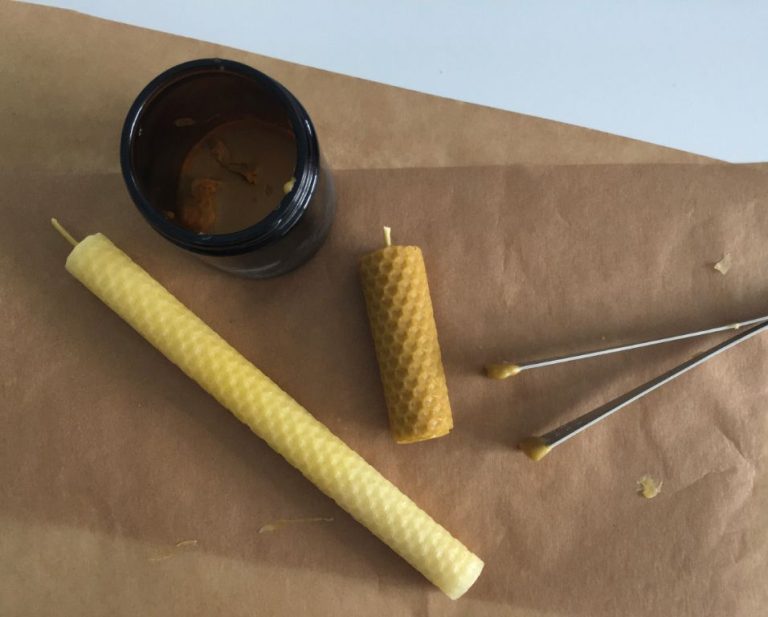Why Add Coconut Oil To Soy Candles?
Soy candles have become increasingly popular in recent years as an alternative to traditional paraffin wax candles. Made from soybean oil, soy candles offer a wide range of benefits that make them an attractive option for many candle enthusiasts.
One of the main advantages of soy candles is that they burn cleaner than paraffin candles. The natural soy wax produces very little soot as it burns, meaning no black residue on jars, walls or ceilings (Candlecrest). The lack of soot also results in less air pollution. Soy wax is made from a renewable resource – soybeans – so it is also more environmentally friendly than paraffin.
In addition to being cleaner, soy candles tend to burn cooler and slower, providing a longer burn time. The lower temperature makes them safer around kids and pets. Soy wax is also biodegradable and non-toxic, making soy candles a healthier choice overall (Scented Designs).
With their many advantages, it’s easy to see why soy candles have become a popular candle option for consumers looking for a cleaner, safer and longer-lasting candle experience.
Coconut Oil Properties
Coconut oil has some unique properties that make it well-suited for soy candles. Two of the main properties are its high saturated fat content and the presence of various fatty acids.
Coconut oil contains over 90% saturated fats, making it highly stable and resistant to oxidation and rancidity (https://www.organicfacts.net/health-benefits/oils/properties-of-coconut-oil.html). This high saturated fat content gives coconut oil a high melting point and allows it to remain solid at room temperature.
Coconut oil also contains a unique blend of fatty acids including lauric acid, capric acid, and others. These fatty acids provide beneficial properties like antiviral and antimicrobial effects (https://www.hsnstore.eu/blog/nutrition/fats/coconut-oil/). The fatty acid composition contributes to coconut oil’s stable structure.
Coconut Oil Benefits for Candles
Coconut oil offers several benefits when added to soy wax candles. First, coconut oil helps slow down the melting rate of candles (Virginutty.co.uk). The higher saturated fat content allows candles with coconut oil to burn cooler, preventing the wax from melting too quickly and affecting burn times. Coconut oil improves fragrance retention in soy wax as well (Suffolkcandles.co.uk). When added at 5-15%, coconut oil can help soy wax hold onto essential oils and perfumes better during the curing and burning process. Lastly, coconut oil leads to a cleaner burn with less soot (Virginutty.co.uk). The natural properties of coconut oil give soy wax a more complete burn, reducing black smoke and melted wax build up on the sides of the container.
Recommended Coconut Oil Types for Soy Candles
When selecting a coconut oil for soy candle making, you’ll want to choose a refined, 76 degree melt point coconut oil. Here’s a breakdown of the differences between refined and unrefined coconut oils:
Refined Coconut Oil
Refined coconut oil has gone through processing to remove any impurities, odors or flavors. This leaves you with a neutral-tasting, odorless oil that won’t alter the intended fragrance of your soy candle. Refined coconut oil gives you the most control over your candle’s scent.
Unrefined Coconut Oil
Unrefined, virgin coconut oil retains more of the coconut flavor and aroma. While this can add a light coconut undertone to your soy candle, it may dilute or alter more delicate intended fragrances. For strongest scent control, refined coconut oil is recommended.
Regardless of whether you choose a refined or unrefined oil, a 76 degree melt point is optimal for soy candle making. This higher melt point helps your candles retain their shape and burn cleanly.
Coconut Oil Percentages
The ideal percentage of coconut oil to add to soy wax is typically between 10-15%. According to Suffolk Candles, “You can add coconut oil to soy wax in any ratio but typically people use between five and 20%.” They note that 10-15% is ideal for achieving benefits like a smoother wax finish and better scent retention, without compromising the wax too much. Higher percentages of coconut oil may start to negatively impact the wax’s stability and burn properties.

As Virgin Utty points out, coconut wax on its own can hold up to 12% fragrance oil. Since soy wax tends to struggle with scent throw on its own, blending it with 10-15% coconut oil brings the fragrance capacity closer to that of coconut wax, improving hot and cold scent throw. This allows soy wax to showcase fragrances better without overpowering the natural soy qualities.
Keeping coconut oil at 10-15% is recommended for maintaining the stability and burn quality of soy wax while benefiting from coconut oil’s fragrance and smoothness boost. Exceeding 20% coconut oil may start to compromise stability and burn time.
Adding Coconut Oil
When adding coconut oil to soy wax, it’s important to properly melt and mix the ingredients. According to Suffolk Candles, the best method is to melt the wax first, monitoring the temperature carefully with a thermometer. The wax should be heated to around 185-190°F (85-88°C). Once melted, remove the wax from the heat source and allow it to cool slightly to around 175°F (79°C). At this temperature, the coconut oil can be mixed in without causing the wax to seize up or separate. Add between 3-5% coconut oil by weight and stir thoroughly to incorporate. Avoid stirring too vigorously or for too long, as this can introduce air bubbles. The coconut oil will blend smoothly into the soy wax at the proper temperatures [1]. Carefully follow the melting and mixing process to get the full benefits of adding coconut oil to soy candles.
Testing and Troubleshooting
Testing your coconut soy candles is an important step before selling or gifting them. Here are some key tests to conduct:
Melt pool
The melt pool refers to how far the wax melts across the candle when lit. To test, burn the candle for 4 hours and measure the diameter of the melted wax pool. For a safe candle, the melt pool should be about 1 inch deep and reach the edges of the container when the candle burns down. Adjust the wax blend or wick size if the melt pool is too small or too large. See How To Conduct a Basic Burn Test for details.
Fragrances
Test how coconut oil affects fragrance strength and throw. The same fragrance may perform differently in soy wax versus soy-coconut wax. Let the candle cure for 1-2 weeks before evaluating scent strength.
Burn time
The coconut oil can impact burn time, so test your candles to ensure you achieve the desired burn time on the label. Monitor burn times with and without coconut oil to optimize the blend.
Fixing issues like poor throw or short burn times may require adjusting the soy-to-coconut ratio, wick type, wax pouring temperature, or curing time. Always test new candle recipes extensively before production.
Coconut Soy Candle Benefits
One of the biggest benefits of adding coconut oil to soy candles is that it helps improve burn time. The fatty acids in coconut oil allow the wax to hold onto fragrance oils longer and burn slower and more evenly (https://www.wickedpleasurecandles.com/blogs/news/illuminating-warmth-how-candles-transform-winter-homes-and-alleviate-seasonal-depression). This results in candles that last up to 50% longer than plain soy candles.
Coconut soy candles also produce a cleaner burn with less soot and smoke. The natural properties of coconut oil help the wax burn at a lower temperature, preventing issues like soot buildup on jar walls and wick corrosion. The cooler burn helps retain fragrance as well.
Using coconut oil in soy wax candles can also boost cold throw. This refers to a candle’s scent when unlit. The extra fatty acids from coconut oil help bind and hold onto fragrance oils, making the candle smell stronger even when not burning (https://www.wickedpleasurecandles.com/blogs/news/illuminating-warmth-how-candles-transform-winter-homes-and-alleviate-seasonal-depression). Coconut soy candles will fill a room with fragrance quicker and more effectively.
Coconut Soy Candle Tips
When making coconut soy candles, there are some tips to follow for the best results:
– Use a larger wick size compared to regular soy candles. The coconut oil allows for a larger melt pool so the wick needs to be bigger to fully melt the wax. Aim for a wick size 1-2 sizes larger than you normally use. CandleScience has a helpful wick guide.
– Pour at slightly lower temperatures, around 135-140°F. The coconut oil has a lower melt point so you don’t need as hot of pouring temps.
– Allow for a longer cure time. Coconut soy candles need 1-2 weeks to fully cure and reach their maximum fragrance throw. The coconut oil takes longer to fully bind with the wax. Be patient for best results.
Conclusion
In summary, adding coconut oil to soy candles provides a number of benefits. Coconut oil helps soy candles burn slower and cleaner, improving burn time and reducing soot (https://theboutiquebutterfly.com/coconut-oil-candle-coco-features/). The addition of coconut oil also allows soy candles to throw scent extremely well, providing a stronger fragrance throw than soy alone (https://www.virginutty.co.uk/blog/coconut-oil-wax-candles-benefits). Coconut oil can hold more fragrance oil than soy, enabling more fragrance to be released when the candle is burned. The natural properties of coconut oil give soy candles a smooth, creamy appearance and texture. Overall, incorporating coconut oil into soy candles enhances many performance features like scent throw and burn quality.





